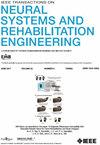mGNN-bw:基于有偏随机漫步路径聚合的多尺度图神经网络用于 ASD 诊断
IF 4.8
2区 医学
Q2 ENGINEERING, BIOMEDICAL
IEEE Transactions on Neural Systems and Rehabilitation Engineering
Pub Date : 2025-02-20
DOI:10.1109/TNSRE.2025.3543177
引用次数: 0
摘要
近年来,基于神经成像数据(如功能磁共振成像(fMRI))对自闭症谱系障碍(ASD)和典型发育(TD)个体进行分类的计算辅助诊断得到了极大的关注。研究表明,ASD患者的远程功能连接模式表现出明显的异常,个体脑网络表现出相当大的异质性。然而,目前用于ASD研究的图神经网络(gnn)未能充分捕获远程连接,并且忽略了个体差异。为了解决这些限制,本研究提出了一种新的基于有偏随机漫步的多尺度图神经网络(mGNN-bw)。该模型引入了子模型和主模型之间的协同优化策略,利用子模型的节点池得分来引导有偏差的随机行走,有效地捕获远程连通性。该模型通过路径编码和聚合构建高阶脑网络,并将其与基于Pearson相关的低阶脑网络进行融合,实现了鲁棒的多尺度特征表示。在公开可用的ABIDE I数据集上的实验结果表明,我们的方法具有优越的性能,在CC200和AAL图谱上分别实现了74.8%和73.2%的准确率,优于现有方法。此外,该模型还识别出了与自闭症相关的关键大脑区域,包括额叶、脑岛、扣带和脑胼胝体,这些都得到了现有研究的支持。该方法对ASD的临床诊断有重要意义。本文章由计算机程序翻译,如有差异,请以英文原文为准。
mGNN-bw: Multi-Scale Graph Neural Network Based on Biased Random Walk Path Aggregation for ASD Diagnosis
In recent years, computationally assisted diagnosis for classifying autism spectrum disorder (ASD) and typically developing (TD) individuals based on neuroimaging data, such as functional magnetic resonance imaging (fMRI), has garnered significant attention. Studies have shown that long-range functional connectivity patterns in ASD patients exhibit significant abnormalities, and individual brain networks display considerable heterogeneity. However, current graph neural networks (GNNs) used in ASD research have failed to adequately capture long-range connectivity and have overlooked individual differences. To address these limitations, this study proposes a novel multi-scale graph neural network based on biased random walks (mGNN-bw). The model introduces a co-optimization strategy between sub-models and the main model, leveraging node pooling scores from sub-models to guide biased random walks, effectively capturing long-range connectivity. By constructing high-order brain networks through path encoding and aggregation, and integrating them with low-order brain networks based on Pearson correlation, the model achieves a robust multi-scale feature representation. Experimental results on the publicly available ABIDE I dataset demonstrate the superior performance of our approach, achieving accuracy rates of 74.8% and 73.2% using CC200 and AAL atlases, respectively, outperforming existing methods. Additionally, the model identifies key ASD-associated brain regions, including the frontal lobe, insula, cingulate, and calcarine, supported by existing research. The proposed method significantly contributes to the clinical diagnosis of ASD.
求助全文
通过发布文献求助,成功后即可免费获取论文全文。
去求助
来源期刊
CiteScore
8.60
自引率
8.20%
发文量
479
审稿时长
6-12 weeks
期刊介绍:
Rehabilitative and neural aspects of biomedical engineering, including functional electrical stimulation, acoustic dynamics, human performance measurement and analysis, nerve stimulation, electromyography, motor control and stimulation; and hardware and software applications for rehabilitation engineering and assistive devices.

 求助内容:
求助内容: 应助结果提醒方式:
应助结果提醒方式:


